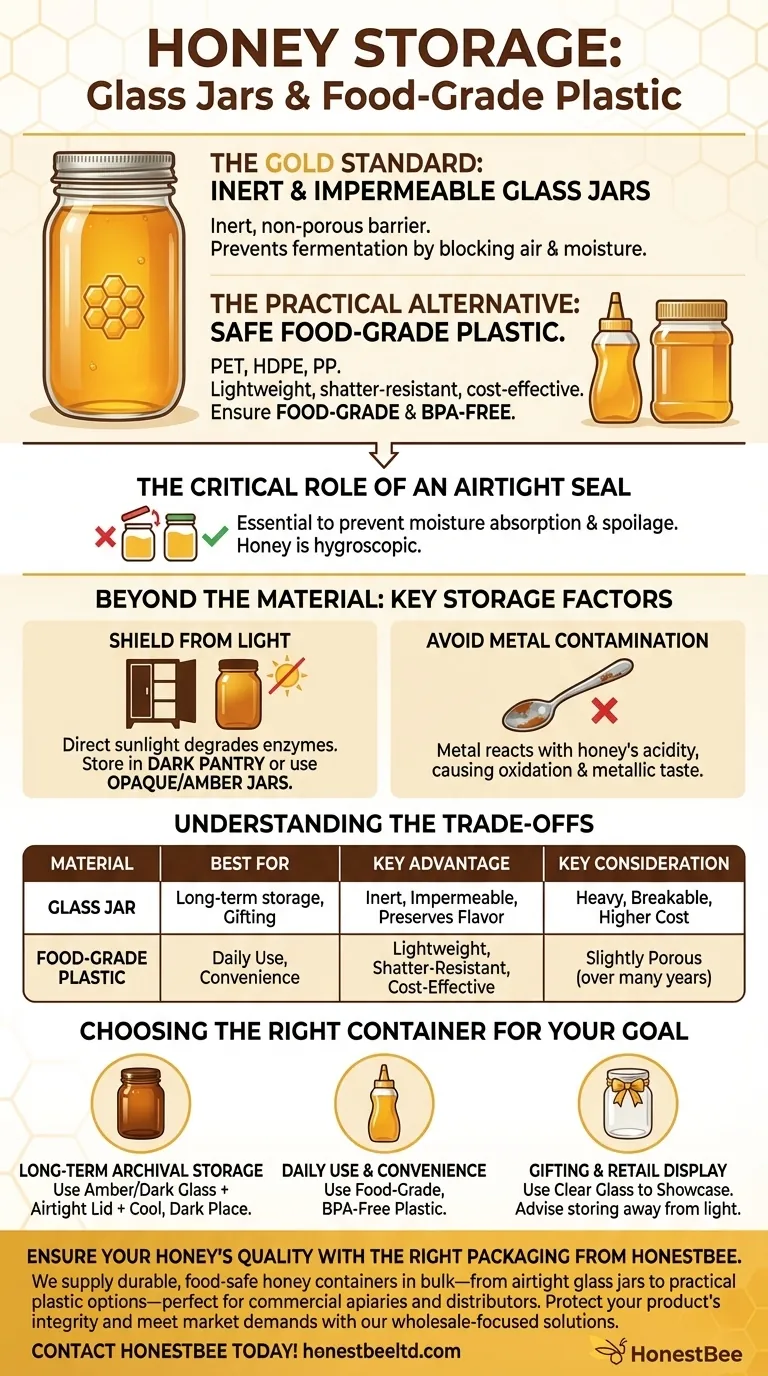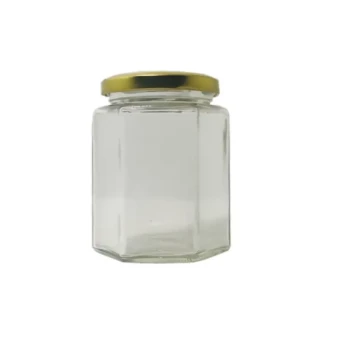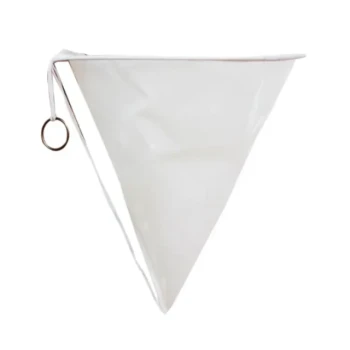The ideal container for honey is a glass jar with a tight-fitting, airtight lid. This combination provides the most inert and impermeable barrier, ensuring the honey's flavor, aroma, and quality are preserved indefinitely. While glass is the gold standard, food-grade plastic containers are also a safe and practical alternative for storage.
Your choice of container is fundamentally about protecting honey from its primary enemies: air, light, and reactive materials. The best container is one that creates a stable, non-reactive environment, effectively pausing the aging process.

Why the Container Material Matters
The material you choose has a direct impact on the long-term stability and purity of the honey. Each option has distinct properties that affect its performance as a storage vessel.
Glass: The Gold Standard for Preservation
Glass is the superior choice for long-term storage because it is inert and non-porous. This means it will not interact with the honey, transfer any flavors, or allow outside air or moisture to seep in over time.
Its impermeability is key to preventing one of the main risks to stored honey: fermentation. If honey absorbs too much moisture from the atmosphere, its natural yeasts can become active and begin to ferment.
Food-Grade Plastic: The Practical Alternative
Food-grade plastics, such as PET (polyethylene terephthalate), HDPE, or PP, are a safe and common choice for honey. They are lightweight, shatter-resistant, and cost-effective, making them highly practical for everyday use and for products like squeeze bottles.
Always ensure the plastic is designated as food-grade and BPA-free. While perfectly safe, plastic is slightly more porous than glass, which may lead to very subtle changes in taste or faster crystallization over many years of storage.
The Critical Role of an Airtight Seal
Regardless of the material, the container must have a tight-fitting, airtight lid. Honey is hygroscopic, meaning it naturally absorbs moisture from the air. An improper seal allows moisture in, which raises the water content and can lead to spoilage.
Beyond the Material: Key Storage Factors
The container itself is only part of the equation. Where and how you store it are just as critical for preservation.
Shielding Honey from Light
Direct sunlight and UV exposure can degrade the quality of honey, diminishing its enzymes and antioxidants. Storing honey in a dark pantry or cupboard is essential.
For ultimate protection, especially for valuable or raw honey, an opaque or amber-colored glass jar offers an additional layer of defense against light damage.
Avoiding Material Contamination
You must avoid storing honey in containers made from metal. The natural acidity of honey can react with many metals, causing oxidation. This process will not only ruin the flavor of the honey but can also leach metallic compounds into it.
Understanding the Trade-offs
Choosing a container involves balancing ideal preservation with practical considerations.
Glass: Purity vs. Practicality
Glass offers unparalleled purity and preservation, making it the clear winner for archival storage. However, it is also heavier, breakable, and often more expensive than plastic, making it less convenient for shipping or daily handling.
Plastic: Convenience vs. Long-Term Integrity
Plastic containers offer unmatched convenience. They are durable, lightweight, and often designed for easy dispensing. The trade-off is a marginal decrease in long-term integrity compared to glass, which is unlikely to be noticeable unless you are storing honey for several years.
Choosing the Right Container for Your Goal
Select your container based on how you intend to use and store the honey.
- If your primary focus is long-term archival storage: Use an amber or dark-colored glass jar with a new, airtight lid, stored in a cool, dark place.
- If your primary focus is daily use and convenience: A food-grade, BPA-free plastic squeeze bottle is perfectly acceptable and highly practical.
- If your primary focus is gifting or retail display: A clear glass jar is the best choice to showcase the honey's color and clarity, but advise the recipient to store it away from light.
By selecting the right container and storage location, you can ensure your honey remains a pure and stable product for years to come.
Summary Table:
| Container Type | Best For | Key Advantage | Key Consideration |
|---|---|---|---|
| Glass Jar | Long-term storage, gifting | Inert, impermeable, preserves flavor | Heavy, breakable |
| Food-Grade Plastic | Daily use, convenience | Lightweight, shatter-resistant, cost-effective | Slightly porous over many years |
Ensure your honey's quality with the right packaging from HONESTBEE. We supply durable, food-safe honey containers in bulk—from airtight glass jars to practical plastic options—perfect for commercial apiaries and distributors. Protect your product's integrity and meet market demands with our wholesale-focused solutions. Contact HONESTBEE today to discuss your packaging needs!
Visual Guide

Related Products
- Hexagonal Glass Honey Jars with Metal Lug Caps Elegant Versatile Packaging
- Inverted Squeezable Honey Jar with No Drip Flip Top Cap for Easy Pouring
- Professional Cone-Shaped Honey Filter with Reinforced Steel Ring
- Premium Diamond-Faceted Glass Honey Dispenser
- Professional Plastic Queen Excluder for Modern Beekeeping
People Also Ask
- How many jars of honey do you get from a hive? Unlock Sustainable Harvesting Secrets
- Why is a glass jar preferred for packaging honey? Ultimate Protection for Purity & Flavor
- What makes raw honey more aesthetically appealing than processed honey? Discover the Beauty of Authenticity
- What is the term for honey can absorb moisture from the air? Understanding Hygroscopy
- What factors should be considered when choosing honey packaging? Optimize for Brand, Operations & Market



















